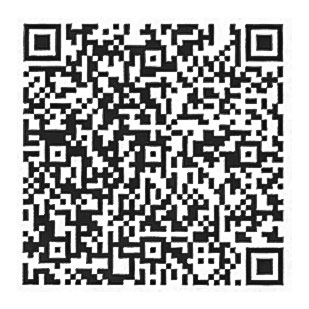备案号:辽ICP备19007957号-1
![]() 聆听您的声音:feedback@highmark.com.cn企业热线:400-778-8318
聆听您的声音:feedback@highmark.com.cn企业热线:400-778-8318
Copyright ©2015- 海马课堂网络科技(大连)有限公司办公地址:辽宁省大连市高新技术产业园区火炬路32A号创业大厦A座18层1801室
Across a range of markets, news media have experienced a rapid collapse of traditional revenue models, leading to widespread discussion of journalism 'in crisis'. Should these developments be seen as a crisis for journalism and democracy?
Since the latter half of the twentieth century, journalism gradually adopted the western democracy ideas and achieved the state of privileged and independence status as a profession offering public service and the fourth estate (Hallin, 1992). However, from the late 1990s, with the development of the technology and the revolution of the new media, the traditional revenue models faced great challenges. Through expanding of networks, computer technology has reduced the different media and inspired convergence; digital information has rapidly transmitted (White, 2012). This essay will mainly focus on the impact of different range of markets on the traditional revenue model of the news media. Although, to some extent, it was in crisis, still markets brings more beneficial. This essay will be divided into three parts, and first part will concentrate on the definition of the journalist and the basic industry formula. The next two parts will discuss both negative and positive impact on the traditional revenue models of news media.
The journalist formed the Eueropean countries and America, from the late 19th and early 20th century. According to Weaver and Wilhoit (1996), it can be defined as the process of gathering, dissemination of news as well as provide information about the news to the audience, thus it not only require the methods to collect news, but also the literary style to edit it. The journalism has diversely forms, including content published by magazines, newspapers, radio and television. With the development of the digital technology, some new versions came out like news websites and applications. There are two main characteristics about the journalism, which refers to the objectivity and neutrality, standing in the position of neutral reflector reported things and not mix the personal deviation. The objectivity includes the elements of the nonpartisanship, detachment, reliance on observable and balance. As Peterson (2001) indicates that the media much be accurate, without lies, and journalists much understand that fact is the fact, opinion is opinion. In the meanwhile, the journalistic norms published by the American Society of Newspaper Editors says the neutrality is the ability to clear identify the news and opinions, not mix the bias in any form. There are four basic traditional revenue models of news media: advertising, subscription, pay-per-item and merchandising. Among them, the advertising is the most common and efficient one in making profits.
In the modern society, with the development of markets, news media faced great challenges. The media companies’ owners tend to expect bigger returns from their investment, thus, they began to have more concern about the method to sale the news. There are two subjects of the sale, first is the readers and second is the advertisers. The formal one had the significant impact one the later one. who also have the interaction with each other, as only with more readers, the advertisers will have more financial outlay to the journalism. In the meanwhile, driven by the profit, sometimes the news media cannot be so objective and neutral. In the era of Internet, the relationships with audiences became much more important to journalists (Heinonen, 2008). Therefore, in order to attract more attention and fulfilled the interests of them, some of the journalists are more likely to cater to the mass, create the focus, sometimes even design news and fabricated false news, regardless of the traditional industry guidelines. For instance, the fake news about a female drug-runner kept 16 young men for entertaining was reported during a national campaign against Chongqing's gangsters that attracted great attention from the whole China. This fake news not only meets the needs from the people who care about the massive crackdown of narcotics, but also meet the novelty requirement of people (Le, 2006). Moreover, these containing biases news leads to more distrust from the readers, which decrease the number of the readers and the reputation of the journalism, eventually impact the income of journalists.
What is worse, with the development of the Internet and digital media, people can read news freely through the computers and mobile phones, for little and without cost. Subscriptions used to be a popular and steady method for media to gain profit, and it no longer provides steady revenues over time. In this case, only in some news media that can provide significant value beyond the common news found elsewhere, people would like to pay for a subscription to this news. For example, the news websites: the Economist and the Wall Street Journal, offering professional information that cannot find in the Google or everywhere else (Simons, 2012). Moreover, the journalism became a job with much flexibility and fragmentation, which leads to an increase in employment instability in the media and entertainment. In such an environment, workers are often unable to join a trade union, and therefore the scope of collective consultation and social dialogue is limited. In this case, more the problems of labour rights existed in the journalism. For instance, the gender inequality, as there is obstacles to equal representation of journalist women and have less progress towards better access to senior management jobs and well paid. It also had the bad impact on the reputation of the journalist, which will decrease the advertisement income.
However, the various markets provide new chance for journalism. One important improvement of news media’s revenue model comes from the circulation and share of information and knowledge. More and more articles and reports are being reprinted on many newly emerging online platforms. In the past, reprinting reports published by others without their prior permission may be regarded as illegal. However, currently, traditional intellectual property right law can not be applied under the new circumstance, as some of them are not for commercial use (Poell & Borra, 2012). Therefore, instead of preventing other press or online platform from reprinting, journalism may as well make use of this commercial pattern to expand its influence and earn more profit. That is to say, if a certain report is circulated on many new media platforms, lots of people are able to have access to it. The outcome is that the journalist editing the report and the newspaper office may become more well-known. Although they may not receive returns such as money or profit in the first time, there are more benefits in the long term. For instance, some advertisement publisher may be interested in publishing their new products through the most popular newspaper, which can bring fat profit for the journalism. Thus, this is a win-win pattern for both of them (Sylvie & Witherspoon, 2001).
Another new revenue model results from the new display materials, which are likely to bring news media back to life. With the development of electronic devices, people are more willing to read newspapers as well as journals on hand, and the key technology behind this development is digital technology. Digital materials are more portable, easier to store and search. In addition, when it comes to the user experience, on-hand electronic books are more similar to printed materials compared to computer. Therefore, as for news media, reports and journals can be transformed into digital ones and then published on relevant online databases, which can be downloaded by people after paying a certain amount of money (Solove, 2004). In this way, the news media can not only survive in the industry innovation, but also set a brand-new pattern of earning profit. For instance, world’s largest e-commerce website Amazon has published the Kindle reader, whose size and thickness is similar to ordinary books, and lots of newspapers and journals have published electronic versions on Kindle. The most important fact is that this business pattern has created abundant revenues for media. Conventional journalism will take on a new look with those new carriers.
In conclusion, in order to attract more subscribers, the news media may distort some important facts and misrepresent key information, which will in turn pose a threat on its reputation and the impose an adverse impact on its revenue from advertisements. In addition, long-existed problems such as feminist issue will also affect the volume of subscription as well as profits. The last negative influence is that with the development of Internet technology, an increasing number of online resources that are free of charge are available to readers, so people are not willing to purchase newspapers. However, if a piece of news can be read by as many people as possible, the media reporting the news may become so influential that it is likely to establish a model of profit from advertisements. Besides, people downloading digital materials may also contribute to the increase of revenue.
References:
Hallin, D. C. (1992) The passing of the High Modernism of American journalism, journal of communication, 42 (3), pp. 14-25.
White, A. (2012) The digital labour challenge: work in the age of new media.
Heinonen, A. (2008) Letting the Audience have a say in newspaper, Tampere: Department of Journalism and mass communication, University of Tampere.
Weaver, D. H., & Wilhoit, G. C. (1996). The American journalist in the 1990s: US news people at the end of an era. Psychology Press.
Peterson, M. A. (2001). Getting to the story: Unwriteable discourse and interpretive practice in American journalism. Anthropological Quarterly, 74(4), 201-211.
Le Mons W. K. (2006). ‘Gangster capitalism’and peasant protest in China: The last twenty years. The Journal of Peasant Studies, 33(1), 1-33.
Simons M 2012, Journalism at the crossroads: Crisis and opportunity for the press, Scribe,Victoria.
Poell, T., & Borra, E. (2012). Twitter, YouTube, and Flickr as platforms of alternative journalism: The social media account of the 2010 Toronto G20 protests. Journalism, 13(6), 695-713.
|
Sylvie, G., & Witherspoon, P. D. (2001). Time, change, and the American newspaper. Routledge. |
Solove, D. J. (2004). The digital person: Technology and privacy in the information age. NyU Press.

 24h在线客服
24h在线客服







备案号:辽ICP备19007957号-1
![]() 聆听您的声音:feedback@highmark.com.cn企业热线:400-778-8318
聆听您的声音:feedback@highmark.com.cn企业热线:400-778-8318
Copyright ©2015- 海马课堂网络科技(大连)有限公司办公地址:辽宁省大连市高新技术产业园区火炬路32A号创业大厦A座18层1801室
hmkt088